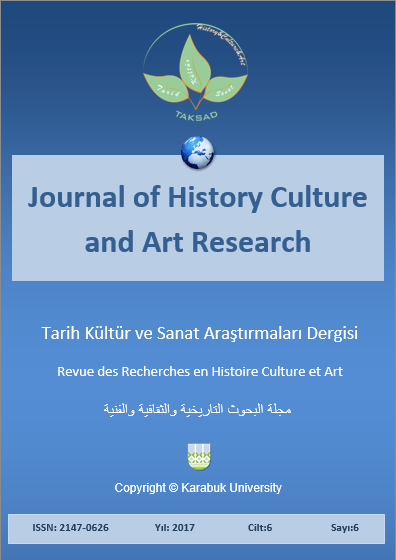Presenting a Model for Setting in Narrative Fiction Illustration
DOI:
https://doi.org/10.7596/taksad.v6i6.1105Keywords:
Illustration, Illustration for barrative fiction, Setting, Time and location, Literal setting, Conceptual setting.Abstract
The present research aims at presenting a model for evaluating and enhancing training the setting in illustration for narrative fictions for undergraduate students of graphic design who are weak in setting. The research utilized expert’s opinions through a survey. The designed model was submitted to eight experts, and their opinions were used to have the model adjusted and improved. Used as research instruments were notes, materials in text books, papers, and related websites, as well as questionnaires. Results indicated that, for evaluating and enhancing the level of training the setting in illustration for narrative fiction to students, one needs to extract sub-indexes of setting. Moreover, definition and recognition of the model of setting helps undergraduate students of graphic design enhance the level of setting in their works skill by recognizing details of setting. Accordingly, it is recommended to design training packages to enhance these sub-indexes and hence improve the setting for narrative fiction illustration.
References
Braund, S. (2015). The itinerant illustration: Creating storyworlds in the reader’s space. Journal of Illustration, 2(2), 267-285.
Gero, J. S. (1996). Creativity, emergence and evolution in design. Knowledge‐Based Systems, 9(7), 435‐448.
Howard, T. J.; Culley, S. J. & Dekoninck, E. (2006). Information as an input into the creative process. In DS 36: Proceedings DESIGN 2006, the 9th International Design Conference, Dubrovnik, Croatia.
Howard, T.; Culley, S. & Dekoninck, E. (2008, January). Creative stimulation in conceptual design: An analysis of industrial case studies. In ASME 2008 International Design Engineering Technical Conferences and Computers and Information in Engineering Conference (pp. 161‐170). American Society of Mechanical Engineers.
Maass, D. (2015). The Breakout Novelist: How to Craft Novels That Stand Out and Sell. Ohio: Writer's Digest Books.
Male, A. (2007). Illustration: A Theoretical & Contextual Perspective. Switzerland: AVA Publishing SA.
Massetti, B. (1996). An empirical examination of the value of creativity support systems on idea generation. MIS quarterly, 83‐97.
Nijstad, B. A.; Stroebe, W. & Lodewijkx, H. F. (2002). Cognitive stimulation and interference in groups: Exposure effects in an idea generation task. Journal of experimental social psychology, 38(6), 535‐544.
Perttula, M. & Sipilä, P. (2007). The idea exposure paradigm in design idea generation. Journal of Engineering Design, 18(1), 93‐102.
Runco, M. A. & Jaeger, G. J. (2012). The standard definition of creativity. Creativity Research Journal, 24(1), 92‐96.
Salisbury, M. (2004). Illustrating Children's Books: Creating Pictures for Publication. Allen & Unwin.
Shah, J. J.; Smith, S. M. & Vargas‐Hernandez, N. (2003). Metrics for measuring ideation effectiveness. Design studies, 24(2), 111‐134.
Wiedemann, J. (2009). Illustration Now. Translated by Hana Dabzad. Tehran: Aban-Ketab Publications.
Wierenga, B. & Van Bruggen, G. H. (1998). The dependent variable in research into the effects of creativity support systems: Quality and Quantity of ideas. MIS quarterly, 81‐87.
Zeegen, L. (2009). What is illustration? Switzerland: Roto Vision SA.
Downloads
Published
How to Cite
Issue
Section
License
All papers licensed under Creative Commons 4.0 CC-BY.- Share — copy and redistribute the material in any medium or format
- Adapt — remix, transform, and build upon the material for any purpose, even commercially.
Under the following terms:
Attribution — You must give appropriate credit, provide a link to the license, and indicate if changes were made. You may do so in any reasonable manner, but not in any way that suggests the licensor endorses you or your use.
- No additional restrictions — You may not apply legal terms or technological measures that legally restrict others from doing anything the license permits.







